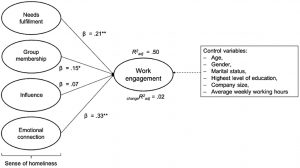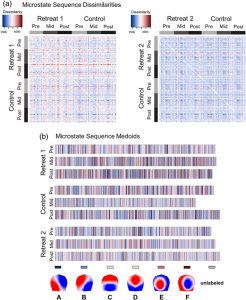Reduce Body Mass and Improve Body Composition in the Overweight Young Women with Yoga
By John M. de Castro, Ph.D.
“The purpose of exercise interventions should be to help youth with obesity find alternatives that increase their engagement with activity, and thus lead to more sustainable changes in lifestyle. Yoga practice is an excellent example of how to use more nontraditional approaches to engage students with exercise.” – Sarah Shultz
Obesity has become an epidemic in the industrialized world. In the U.S. the incidence of obesity, defined as a Body Mass Index (BMI) of 30 or above has more than doubled over the last 35 years to currently around 35% of the population, while two thirds of the population are considered overweight or obese (BMI > 25). Sadly, children and adolescents have not been spared with 1 in 5 school age children and young people (6 to 19 years) classified as obese.
Obviously, there is a need for effective treatments to prevent or treat obesity. But, despite copious research and a myriad of dietary and exercise programs, there still is no safe and effective treatment. Mindfulness is known to be associated with lower risk for obesity, alter eating behavior and improve health in obesity. This suggests that mindfulness training may be an effective treatment for overeating and overweight alone or in combination with other therapies. Yoga practice has been shown to have a myriad of physical and psychological benefits. These include significant loss in weight and body mass index (BMI), resting metabolism, and body fat and improve health in the obese.
In today’s Research News article “Effects of Continuous Yoga on Body Composition in Obese Adolescents.” (See summary below or view the full text of the study at: https://www.ncbi.nlm.nih.gov/pmc/articles/PMC8410386/ ) Nongkhai and colleagues recruited overweight (BMI 23-29.5) young women (age 19-22 years) and randomly assigned them to either engage in continuous yoga practice 3 times per week for 50 minutes for 12 weeks or to a no treatment control condition. The yoga practice was designed to increase and maintain aerobic exercise levels (65% – 75% of maximum heart rate). Before, at the midpoint, and after training they were measured for body size and composition.
They found that in comparison to baseline and the control group the yoga group had significant decreases in their Body Mass Index (BMI) and body fat mass. While the control group had a significant decrease in muscle mass, the yoga group maintained their muscle mass. Hence, participation in yoga had positive body size and composition benefits for overweight young women.
In the present study, the intervention was a yoga practice that elevated and maintained aerobic levels. This makes it impossible to discern if the benefits were due to yoga per se or to the exercise. Nevertheless, these results to some extent replicate previous findings that yoga practice improves weight and body composition. Future research should contain a non-yoga aerobic exercise group. Regardless, it is clear that engaging in continuous yoga is improves the body size and composition of young women.
So, reduce body mass and improve body composition in the overweight young women with yoga.
“Yoga practice works to expand consciousness of overall health and well being. . . . many children and teens dealing with obesity who find a safe place in yoga to cultivate a positive sense of self that contributes to confidence.” – Abby Wills
CMCS – Center for Mindfulness and Contemplative Studies
This and other Contemplative Studies posts are also available on Google+ https://plus.google.com/106784388191201299496/posts and on Twitter @MindfulResearch
Study Summary
Na Nongkhai, M. P., Yamprasert, R., & Punsawad, C. (2021). Effects of Continuous Yoga on Body Composition in Obese Adolescents. Evidence-based complementary and alternative medicine : eCAM, 2021, 6702767. https://doi.org/10.1155/2021/6702767
Abstract
Overweight/obesity is a pressing international health concern, and conventional treatments demonstrate poor long-term efficacy. Several studies have shown that yoga can control risk factors for cardiovascular disease, obesity, and psychosocial stress. The present study aimed to assess the effect of continuous yoga (asanas, pranayama, and Surya Namaskar yoga) on body composition in overweight participants. Forty adolescents with obesity were enrolled in this study. The study was conceived as a prospective, single-center, single-blinded randomized controlled trial. The participants were divided into 2 groups: the intervention group (n = 20), which undertook a continuous yoga practice, and the control group (n = 20). Body composition, including body weight (BW), body mass index (BMI), body fat mass (BFM), and muscle mass, was evaluated using tetrapolar bioelectrical impedance (BIA). Our results showed that the mean BMI and BFM of the yoga intervention group were significantly decreased at week 8 and week 12. The muscle mass of the yoga group continued to improve at a rate of 0.515 per week, which was statistically significant. In conclusion, a continuous yoga practice had a tendency to decrease BMI and BFM and increase muscle mass. These findings demonstrate intervention effectiveness similar to that observed in other clinical research and indicate that continuous yoga practice may be used as an alternative therapy for obesity prevention and health promotion in adolescents with obesity.
https://www.ncbi.nlm.nih.gov/pmc/articles/PMC8410386/









